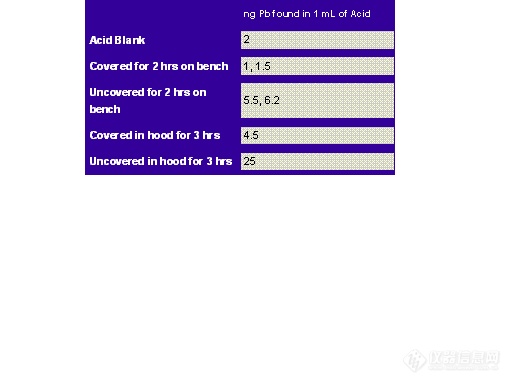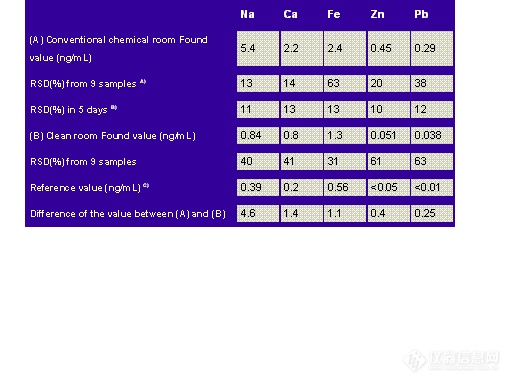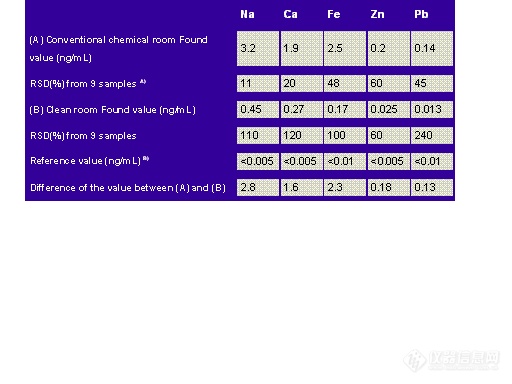


第2楼2005/03/30
The effectiveness of clean rooms in eliminating environmental contamination is illustrated in Tables 8.2 and 8.3 which show a significant reduction in the blank.
Table 8.2: Analytical Results for Trace Impurities in Ultra-Pure Nitric Acids2
(Concentrated in Conventional Chemical and Clean Rooms)
Table 8.3: Analytical Results for Trace Impurities in Ultra-Pure Water Samples2
(Concentrated in Conventional Chemical and Clean Rooms)
For budgets that cannot handle the cost associated with clean room facilities there have been several ingenious designs that are effective in dealing with environmental contamination. Diagram 4.4 illustrates some of these designs using equipment that is relatively inexpensive and easily obtained.
第3楼2005/03/30
Diagram 8.4: Evaporation Chamber Designs1
Avoiding Environmental Contamination:
Teflon coat or epoxy paint the (hopefully few) metal objects in the laboratory. Epoxy paint the walls. Walls should be washed down weekly and repainted annually.
Use special adhesive floor pads for all openings to the laboratory.
Use disposable plastic gloves and disposable paper laboratory coats.
Vinyl covered floors should be mopped daily. Floors with drains allow for easier daily washing.